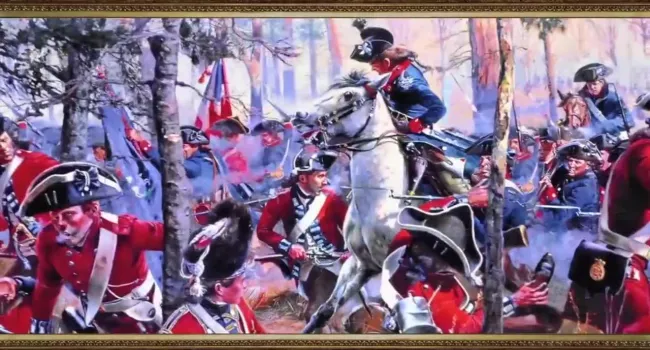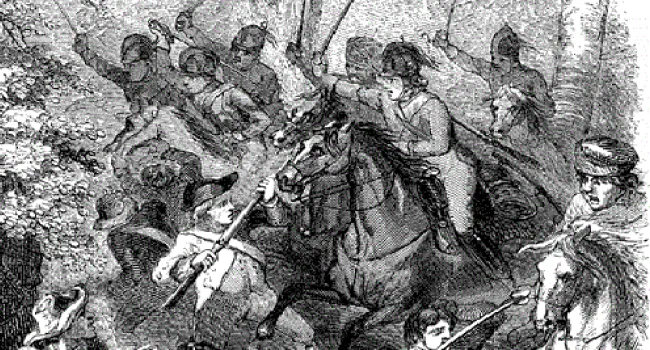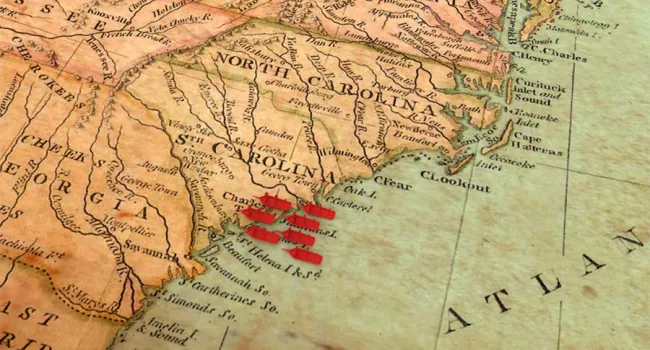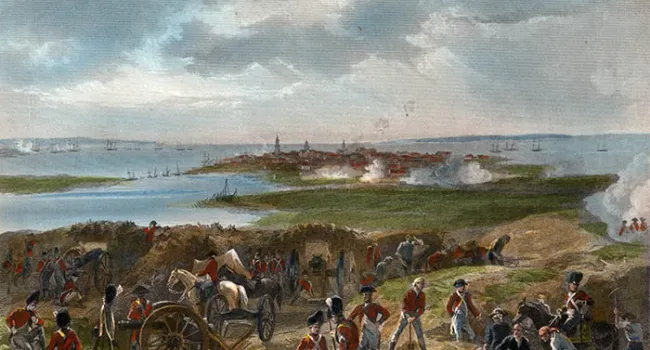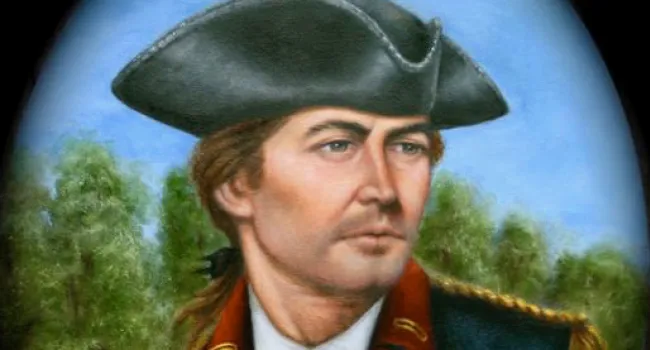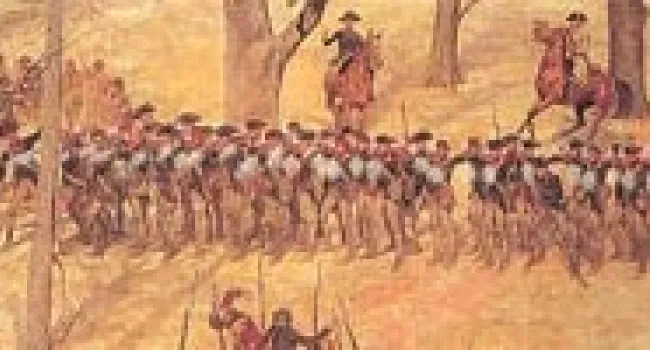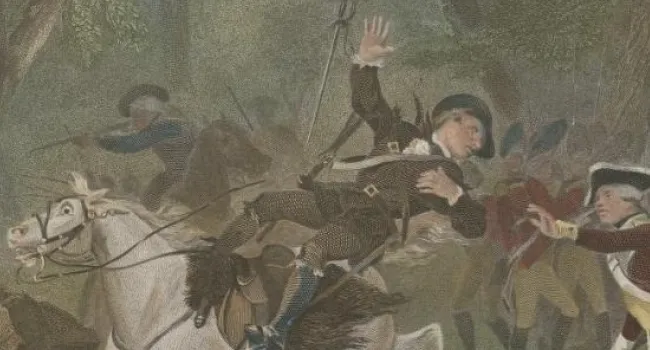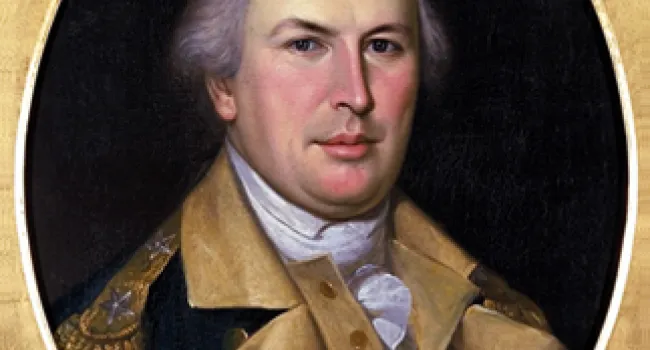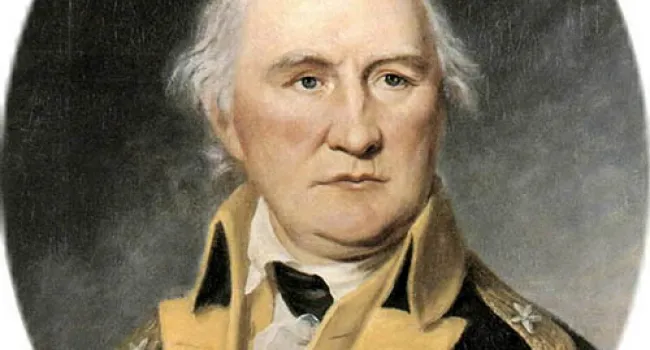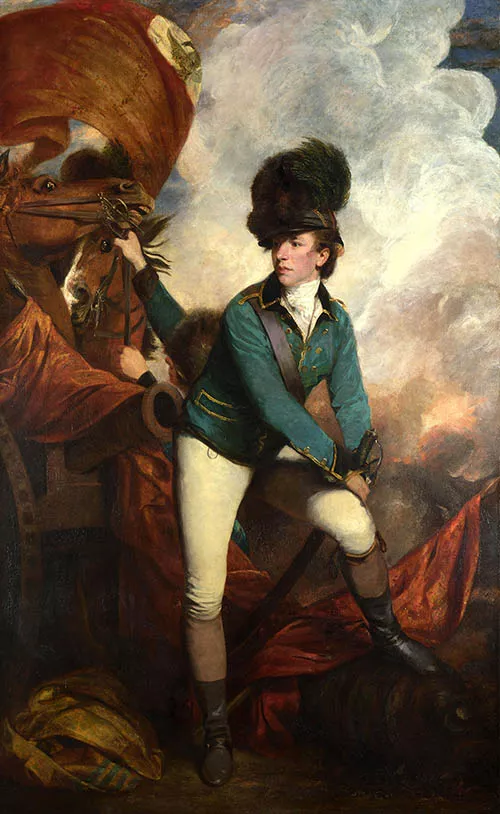
Artwork by Joshua Reynolds
Lieutenant Colonel Banastre Tarleton led the British Legion which was a combination of infantry, cavalry, and artillery forces into battle against Colonel Abraham Buford's men. Col. Buford was leading a regiment of Continental soldiers from Virginia to South Carolina to help defend Charleston.
At age twenty-six, Tarleton was a driven person and the British officer displayed aggressiveness in battle that far exceeded his experience and age. On May 29, 1780, the British Legion caught up with Col. Buford’s army at a place called “The Waxhaws” in the Catawba River valley, located four miles south of the North Carolina border. Over in fifteen minutes and with 113 Americans dead on the field, this massacre became the first major battle of the Southern Campaign.
The Battle of Waxhaws also became a turning point in the Revolutionary War, but not for reasons the British might have hoped. Their intent was to make the back country colonists feel the “heel of the boot.”
Many patriots who had previously surrendered rejoined the fight to repay the harshness of “Tarleton’s quarter” with a vengeance of their own.
Standards
- 4-3 The student will demonstrate an understanding of the conflict between the American colonies and England.
- 8-2 The student will demonstrate an understanding of the causes of the American Revolution and the beginnings of the new nation, with an emphasis on South Carolina’s role in the development of that nation.
Obra de Arte por Joshua Reynolds
El Teniente Coronel Banastre Tarleton dirigió la Legión Británica, que era una combinación de fuerzas de infantería, caballería y artillería, para luchar contra los hombres del Coronel Abraham Buford. El coronel Buford estaba dirigiendo un regimiento de soldados continentales de Virginia a Carolina del Sur para ayudar a defender a Charleston.
A la edad de veintiséis años, Tarleton era una persona impulsada y el oficial británico mostró agresividad en la batalla que superó con mucho su experiencia y edad. El 29 de mayo de 1780, la Legión Británica se encontró con el ejército del coronel Buford en un lugar llamado "las Waxhaws" en el valle del río Catawba, ubicado a cuatro millas al sur de la frontera con Carolina del Norte. En quince minutos y con 113 estadounidenses muertos en el campo, esta masacre se convirtió en la primera gran batalla de la Campaña del Sur.
La batalla de Waxhaws también se convirtió en un punto de inflexión en la Guerra Revolucionaria, pero no por razones que los británicos podrían haber esperado. Su intención era hacer que los colonos de la zona o del campo sintieran el "talón de la bota".
Muchos patriotas que se habían rendido se reunieron a la lucha para pagar la dureza del “cuartel de Tarleton” con una venganza propia.
